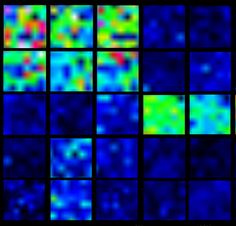 F. Pagni, V. Mainini, M. Garancini, F. Bono, A. Vanzati, V. Giardini, M. Scardilli, P. Goffredo, A. J. Smith, M. Galli, G. De Sio and F. Magni
F. Pagni, V. Mainini, M. Garancini, F. Bono, A. Vanzati, V. Giardini, M. Scardilli, P. Goffredo, A. J. Smith, M. Galli, G. De Sio and F. Magni
Cytopathology. 2015 Oct;26(5):318-24. Epub 2014 Jul 20.
Objective
Matrix-assisted laser desorption/ionization (MALDI) imaging mass spectrometry (IMS) is a unique proteomic technology that explores the spatial distribution of biomolecules directly in situ, thus integrating molecular and morphological information. The possibility of correlating distribution maps of multiple analyses with cytological features makes it an ideal research tool for discovering new diagnostic markers. A previous study showed that MALDI-IMS could help discrimination between different types of thyroid lesions, especially papillary thyroid carcinoma (PTC); the present feasibility study on ex vivo fine needle aspiration (FNA) smears describes its potential in detecting new proteomic targets of other thyroid lesions (follicular lesions, medullary carcinoma).
Methods
MALDI-IMS was conducted on ex vivo FNAs obtained from surgical specimens and corresponding in vivo samples. Differences between proteomic profiles of different thyroid lesions were compared.
Results
Comparing the protein profiles of hyperplastic nodules obtained from three different patients with each other, and with a new PTC, showed a high degree of concordance, indicating good reproducibility of the IMS technology on cytological samples, suggesting its potential as a tool for biomarker discovery. Furthermore, comparison of the average proteomic profiles of hyperplastic nodules with a Hürthle cell adenoma revealed significant differences, underlying the capability of MALDI-IMS to distinguish between different thyroid lesions. Finally, the proteomic profile of medullary thyroid carcinoma was also characterized.
Conclusions
Our results confirmed the possible role of MALDI-IMS in the search for diagnostic targets of PTC and follicular lesions, which could be applied in larger trials aimed at the identification of proteins, convertible to cost-effective diagnostic tools such as immunohistochemistry. These tests could be used to analyse in vivo cytological smears, improving the preoperative diagnosis of indeterminate thyroid nodules.


No responses yet